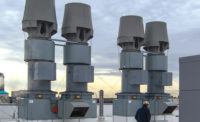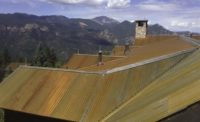Rooftop terraces and gardens have become some of the most sought after amenities in urban buildings. Tenants and condominium owners pay a premium for these design features and expect high-quality detailing and construction that does not distract from the views the rooftops provide. Anything installed on an occupied roof must also be robust enough to withstand damage, unintentional or otherwise, from people coming in contact with rooftop equipment.
Lightning protection systems can satisfy these expectations, as demonstrated by recently constructed buildings in downtown Chicago. The projects illustrate several approaches to integrating lightning protection into building parapets and railings while still complying with industry standards.
Rooftop air terminals, informally called lightning rods, are the most visible element of a lightning protection system, yet they are only part of a complete system that includes a network of lightning conductors extending through a building to connect to ground electrodes embedded in the earth outside the structure’s foundations.1
Renelle Building
Air terminals are not highly visible when viewed from the ground; they can be as small as 3/8-inch diameter, rise at least 10-inches above surrounding construction, and set back up to 24 inches from the building perimeter. Still, some designers would rather not see air terminals up close by someone on a terrace. For them, a strike termination device can be used instead of conventional lightning rods.
According to industry standards, a strike termination device can be any permanent part of a structure made from metal at least 3/16-inch thick (0.064-thick for handrails) and made electrically continuous with the lightning protection system. Railings, shade structures, decorative items, and other metal fabrications can be used in lieu of air terminals to meet design requirements.2
The Renelle, (403 N. Wabash), designed by bKL Architecture uses strike termination devices around its roof top terrace, giving visitors unimpaired views of the Chicago River and the city’s skyline. An extra-thick top rail is made electrically continuous with steel balusters and the rest of the lightning protection system.
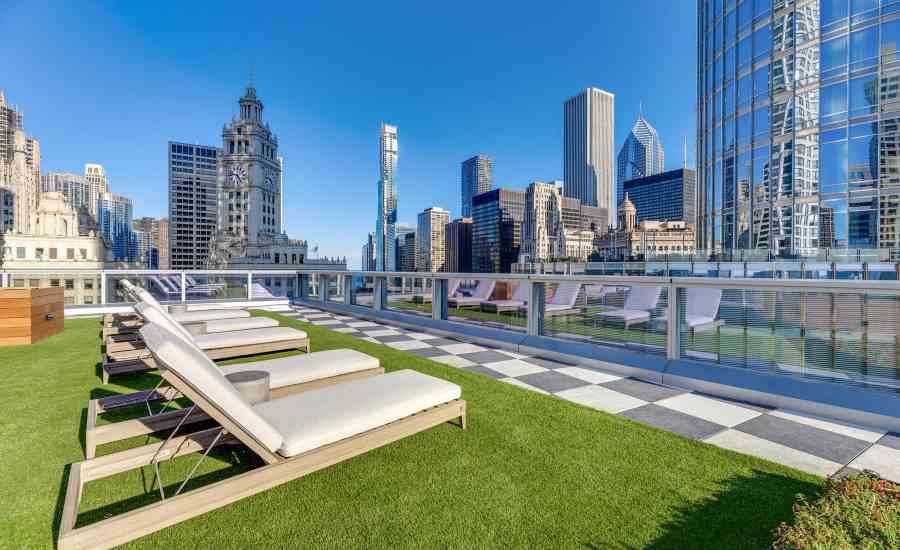
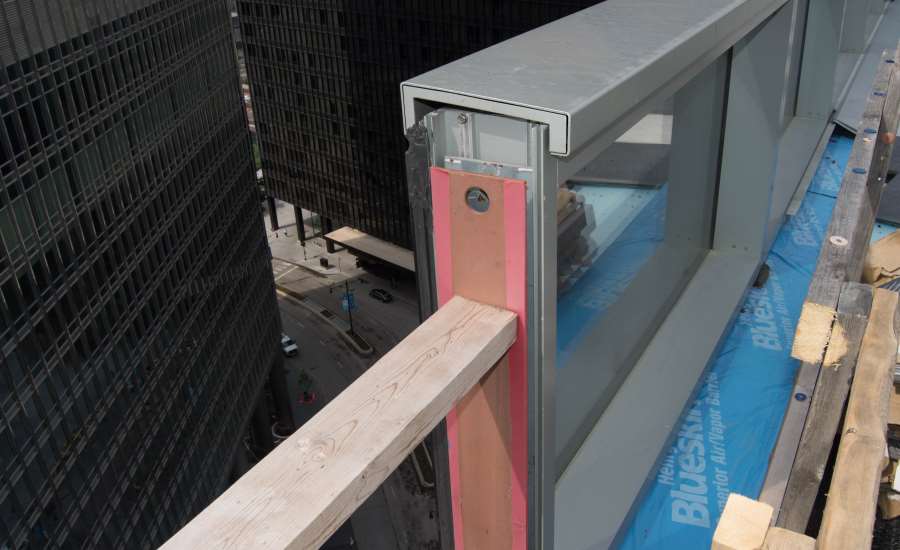
NEMA Building
The NEMA Building (1200 S. Indiana Ave.) has commanding views of Grant Park. To honor the views, Rafael Viñoly Architects specified railings as strike termination devices around a pool deck. The railings were installed on the inside face of the building’s extra wide parapet, placing them more than 24 inches from the face of the building. This required air terminals to be installed on the parapet coping.
The need for both air terminals and strike termination devices in close proximity was determined by a “rolling sphere” analysis. The charges capable of causing damage by lightning usually strike within a 150-foot radius and is modeled as if a 300-foot diameter sphere is rolled across a building’s surface; wherever the sphere touches the building is a location where lightning can attach to the building. This instructs the placement of either a strike termination device or air terminal to protect the structure.3
The visual impact of the air terminals is minor, however, because the air terminals are outside the glass railing and below the common sight lines for views of the park.
Lightning conductor cables connect the air terminals and the bottom of the balusters to through structure penetration devices that connect with the rest of the lightning protection system. The conductors and through structure penetration devices are concealed among the foliage in planter beds around the terrace.
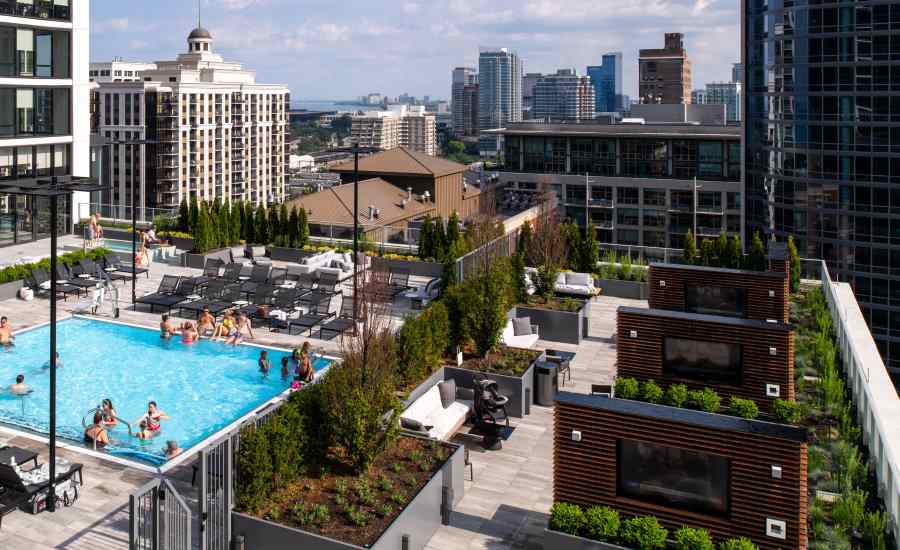
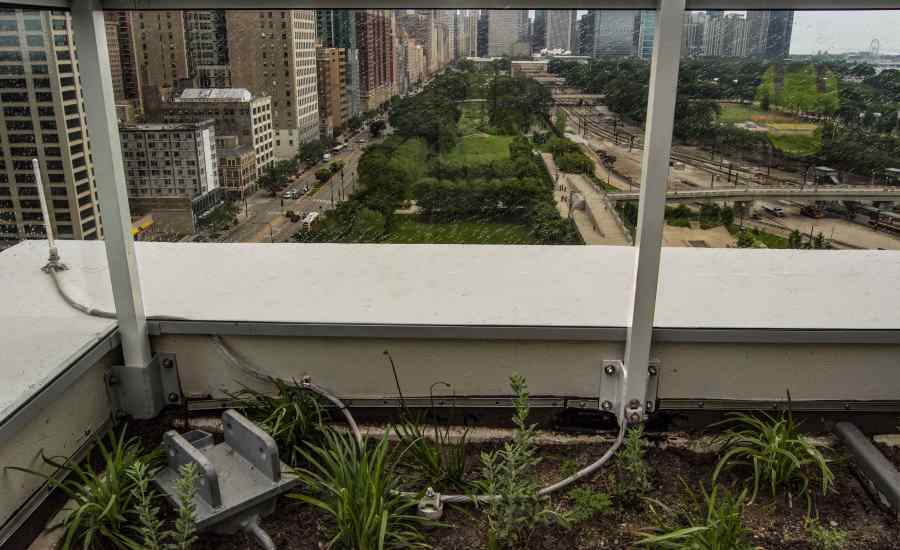
Paragon Building
Instead of trying to minimize the appearance of the lightning protection system at the nearby Paragon Building (1326 S. Michigan Ave.), architect Solomon Cordwell Buenz (SCB) exalts air terminals, making them a proud part of the tall wind screen.
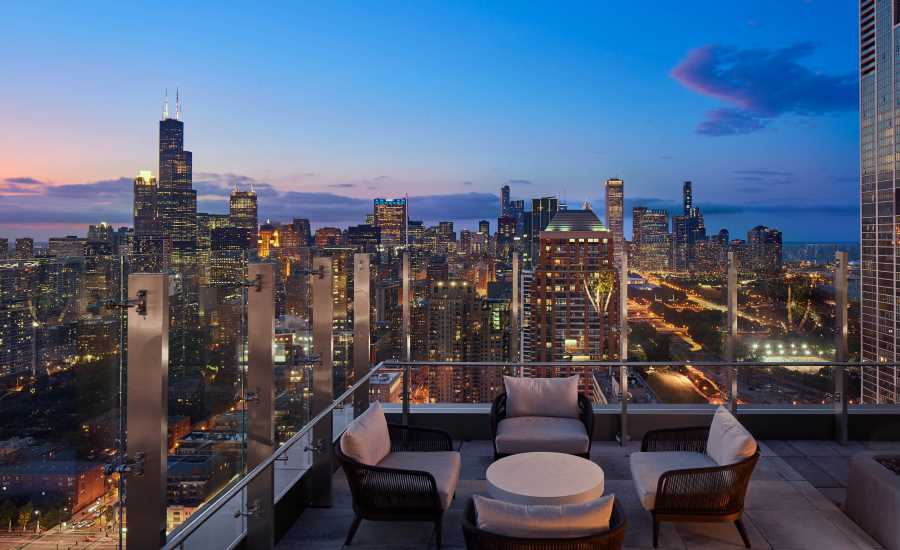
Aluminum air terminals are bolted to the tops of aluminum stanchions that, in turn, conduct lightning to beneath the elevated concrete roof pavers. There, lightning conductor cables connect the stanchions to through structure penetration devices that connect to down conductors inside the building.
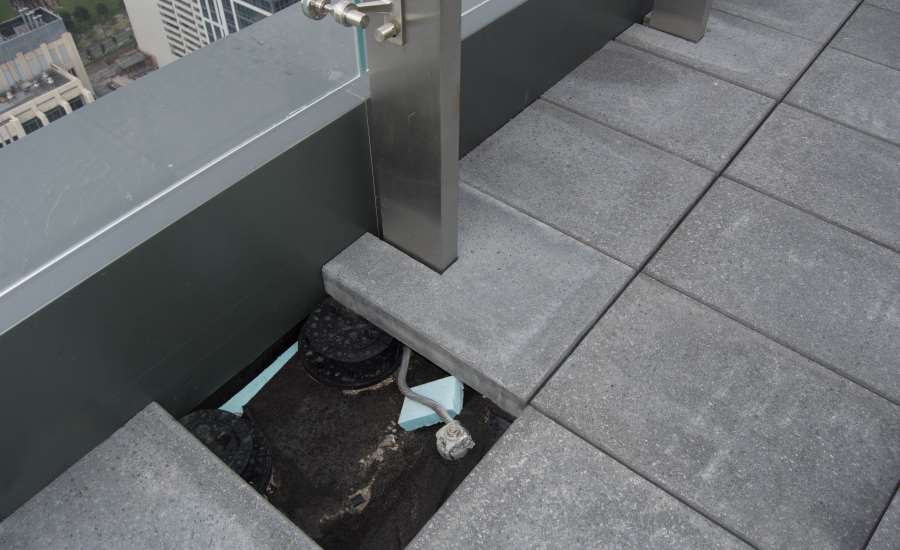
Photo courtesy of East Coast Lightning Protection.
One Bennett Park Building
The richly appointed One Bennett Park (451 E. Grand Ave.), designed by Robert A.M. Stern Architects, utilizes several techniques.
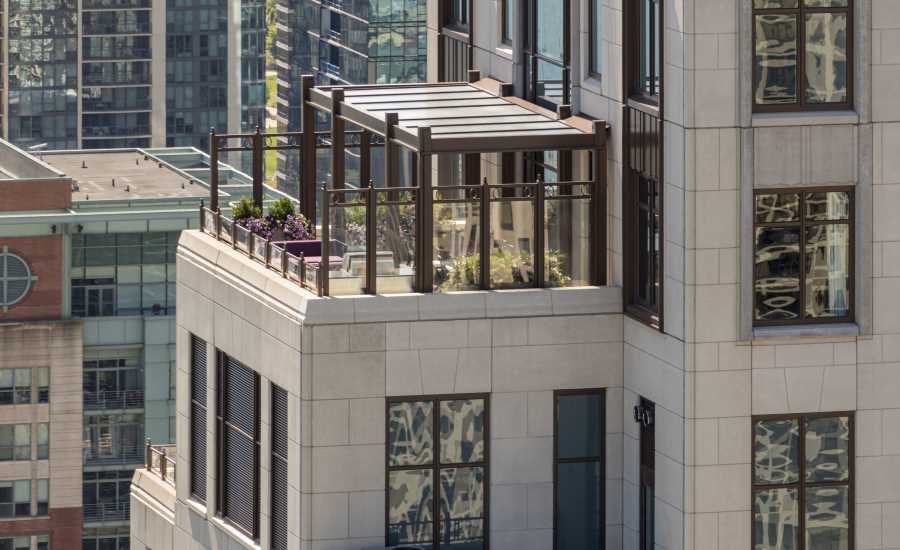
Classically shaped, cast bronze air terminals are used around a terrace located on a two-story high podium. Viewed from the terrace, the air terminals are partially screened by foliage and the parapet is drilled so that conductor cables could run, out of sight, into the planters. However, the air terminals are visible from the street and are mounted on limestone pedestals aligned with the building’s fenestration.
Terraces at upper levels utilize ornate metal railings, wind screens, and pergolas as strike termination devices.
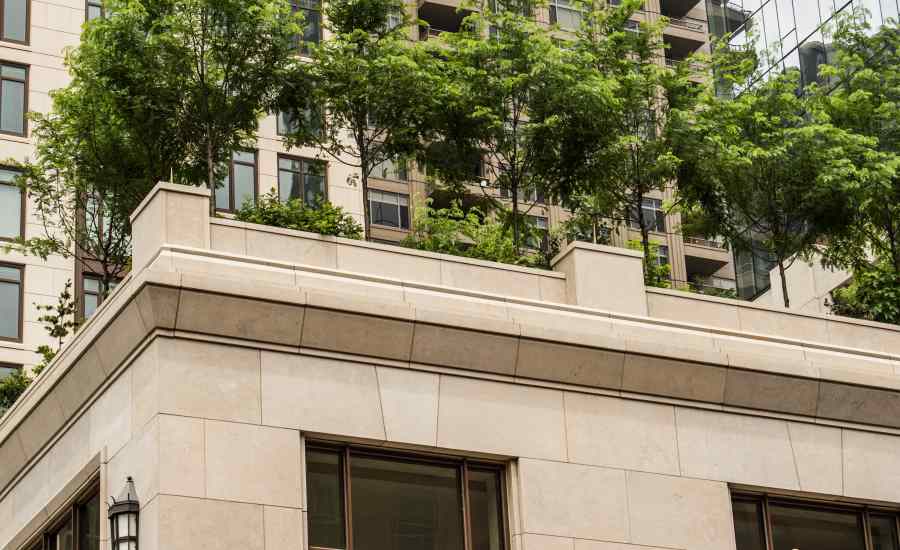
155 N. Wacker
Many tall buildings have building maintenance units (BMU) or other roof-mounted devices for raising and lowering window washing and exterior maintenance crews. As these machines move from one location to another, they can bump into and damage air terminals. The potential for damage can be minimized by installing air terminals on spring-adapters that will flex upon impact. The photo shows an air terminal with a spring adapter being installed beneath the BMU at the 155 N. Wacker building.
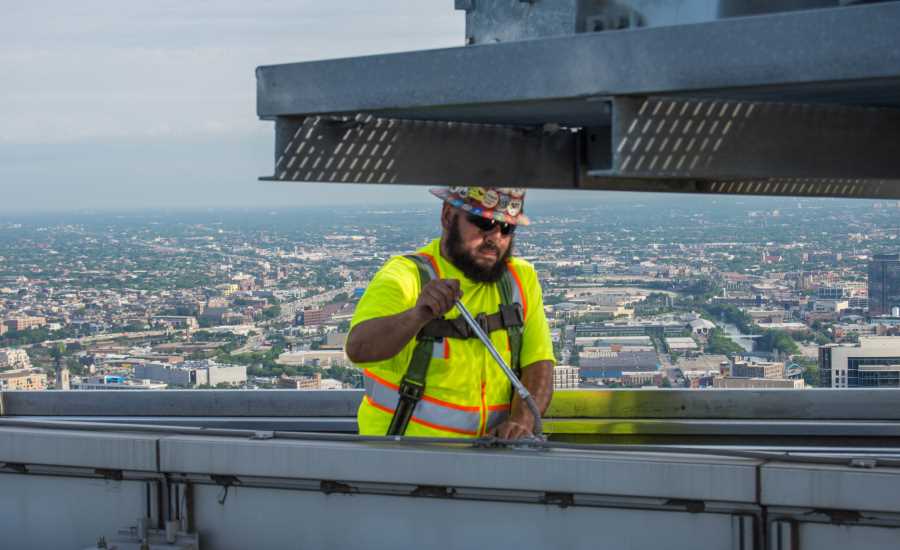
Conclusion
Successful design and construction of rooftop terraces and gardens require the collaboration of the building’s architect and general contractor with a lightning protection system designer and installer certified by the Lightning Protection Institute. The lightning protection professional should be consulted early in the design process to help assure the lightning protection system will meet the project’s aesthetic requirements, be affordable and provide reliable protection.
Observing North American consensus standards for lightning protection is vital to prevent use of products based on early streamer emissions, charge dissipation, and other unsubstantiated theories. Lightning protection systems are not in the bailiwick of most building code officials, so third-party inspection and certifications services such as the Lightning Protection Institute—Inspection Program should also be used for quality assurance.4
The lightning protection systems described in this article are intended to protect damage to the building structure, contents and occupants. They do not, however, provide protection to individuals on a rooftop during an electrical storm. The building owner and occupants must be informed that, as the National Weather Service warns, “When Thunder Roars, Go Indoors.”
Resources
1. To learn more about the basics of lightning protection, visit ecle.biz.
2. For more about strike termination devices, visit bit.ly/StrikeTerminationDevices.
3. Visit bit.ly/rolling-sphere for of animation rolling sphere technique for determining placement of air terminals.
4. Standards include National Fire Protection Association (NFPA) 780 – Installation of Lightning Protection Systems, Lightning Protection Institute (LPI) 175 - Design–Installation–Inspection of Lightning Protection Systems, and UL, LLC (UL) 96A – Installation Requirements for Lightning Protection Systems. An article explaining concerns about non-recognized systems is at bit.ly/nonconventional_systems. Information on inspection programs is at lpi-ip.com.
The authors thank HLP Systems, Inc. for arranging access to rooftops.








